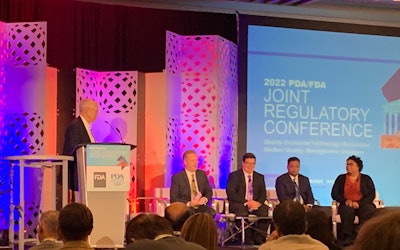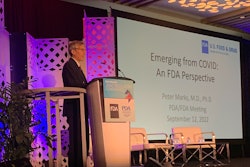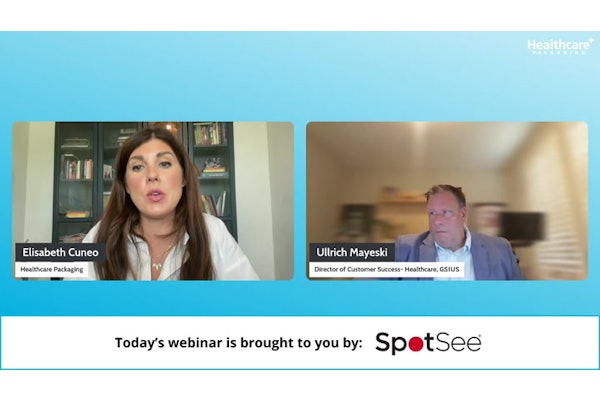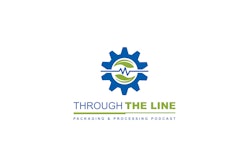From left, moderator David L. Chesney, MSJ, principal and general manager, DL Chesney Consulting, LLC with Francis RW Godwin, MBA, office director, OC, CDER, FDA; Daniel DeCiero, consumer safety officer, CBER, FDA; Lance M. De Souza, MBA, director, compliance branch, OMPTO, ORA, FDA; and Marea K. Harmon, consumer safety officer, CVM, FDA.
At this week’s PDA/FDA Joint Regulatory Conference in Washington D.C., panelists answered an array of questions on sustainable compliance by life science manufacturers to uphold product quality for patients. [Editor's note: FDA responses reflect the views of the individual representatives at the conference, and are not to be construed as legal advice.]
When asked how 483 responses can be improved so they lead to more sustainable solutions and corrections, Francis Godwin, MBA, office director, OC, CDER, FDA, offered advice from his personal perspective, having both industry and FDA experience.
“One of the things is understanding that when FDA's looking at a response, we're going to be asking, ‘Is this finding the tip of the iceberg, or is this it?’” Godwin said. Perhaps the finding is a one-off, or perhaps the problematic practice is across the board. “So, one of the things we recommend is that if you're creating a 483 response, do not just look at the one thing that was cited in the 483. Investigators are there for a few days. They're not going to do a complete audit of everything. They're going to look for examples and point them out.”
He provided a hypothetical example in which an investigator finds that a company missed the stability sampling and testing time point. If the company’s response is along the lines of, “Yes, but we tested that one sample and it's good,” then FDA is going to question if the rest of the samples are ok. Godwin cited 21CFR211.192 as the bread-and-butter for quality oversight of systems. “We expect there will be problems—if you find a problem, look at it. But also look and see is this problem limited to [this instance] or does it affect other things? When you're crafting a 483 response, keep that in mind. Because you want to look at what was found by the investigators and understand what's going on, but also ask—and FDA's going to ask—is this a bigger [issue] that affects other drugs, other lots? That that really helps us in terms of knowing what to do.”
In a Q&A session, Carmelo Rosa, PsyD, division director, Office of Manufacturing and Product Quality, CDER, FDA, shared similar advice. At times, when a product fails a given test or has an issue, he said some companies focus on only that product. “The approach is so narrow that you miss the signals of other products that may be having similar situations,” said Rosa. “We want to encourage you that if you see these other signals on a given product, look at the other products, look at your other equipment. See if they’re behaving or deteriorating at the same rate. You can save yourself a lot of issues because if you’re not doing the walkthroughs, I can promise you there’s a lot of young investigators that don’t have a problem with walking around the facility and they’re going to go into these rooms that nobody goes into. They’re going to check the piping.”
As Rebecca Dowd, MS, supervisory investigator, ORA, FDA, summed up, companies may be taking too narrow of a focus in response to events or deviations and not taking a holistic approach, while investigators wonder, “If it happens here, where else is it happening?”
Rosa also noted that they’re still seeing facilities with dead legs, and it’s a symptom (in part) of not looking at the equipment and analyzing conditions.
Verbal comments by investigators
An attendee asked during a compliance trend panel if it’s prudent for drug sponsors to respond to verbal remarks made by an FDA investigator during or at the closing of an inspection. Lance De Souza, MBA, director, compliance branch, OMPTO, ORA, FDA, noted that when a company responds to a 483, it’s advisable to take into account all of the interactions you had with an investigator. The investigator makes their own observations, and areas of concern can be relayed at any point during that inspection. While it’s common for a 483 to be issued to document observations, verbal observations can also be cited as well. “At the end of the day, the goal should be to convey to the FDA that you understand areas of concern via a 483 or… a verbal observation.”
Brand owner and CMO responsibility
Third parties, including contract manufacturing and packaging organizations (CMOs and CPOs, respectively), are not always overseen as carefully as expected. One attendee asked the panelists if they foresee additional regulatory enforcement on this issue. “Yes and no,” said Godwin. “Yes, in that FDA does take interest in both product owners or sponsors and their contract manufacturers.”
But Godwin pointed out this is an area FDA has been attending to for quite some time. “Our guidance that talks about quality management when dealing with contract organizations actually goes through a lot of examples towards the end,” he explained. “Those scenarios were actually based on real-life cases where FDA may have conducted an inspection of a contract manufacturer.”
In some cases, the contract manufacturer has pointed the finger at the product owner. When FDA has inspected or talked to the product owner, they pointed the finger at the contract manufacturer. As regulators, the concern is not about who is pointing the fingers. “We care about the patient. So, in the end, we've actually issued warning letters to both of them,” he noted.
In essence, the entities—sponsor and contract service organization—need to sort the issue out among themselves, or FDA will have to sort it out for them. While most GMP inspections are going to be at the manufacturing facilities themselves, if FDA does see troubles between the CMO and the product owner, FDA will engage with the product owner heavily as well.
Godwin has also seen instances where a product owner exhibits a pattern of using poor quality contract facilities. “We'll send a letter to the product owner, and we'll lay out all of the warning letters, import alerts, or other actions we’ve put on their contractors and let them know we're putting the onus on you as the product owner. You're ultimately responsible for release to the patients,” he said.
Voice of the industry: working with your CMOs“You need to have that communication... you delegate the work, you don't delegate the responsibility and you need to know them very, very well and be in charge of them. Every single CMO [we work with], I know the CEO, I know the people that are in charge. We know the site heads. We are trying to get all of this done together. And it is hard... you cannot go and dump that responsibility.” - Juan Andres, chief technical operations and quality officer, Moderna, Inc.
Formatting responses
Another FDA representative noted that in audit responses, it’s important to clearly mark commitments. This is a big challenge for busy FDA officials—they review hundred- or even thousand-page audit responses. In navigating these documents before re-inspection, a chart or section that clearly notes commitments and deadlines is an important feature.






















